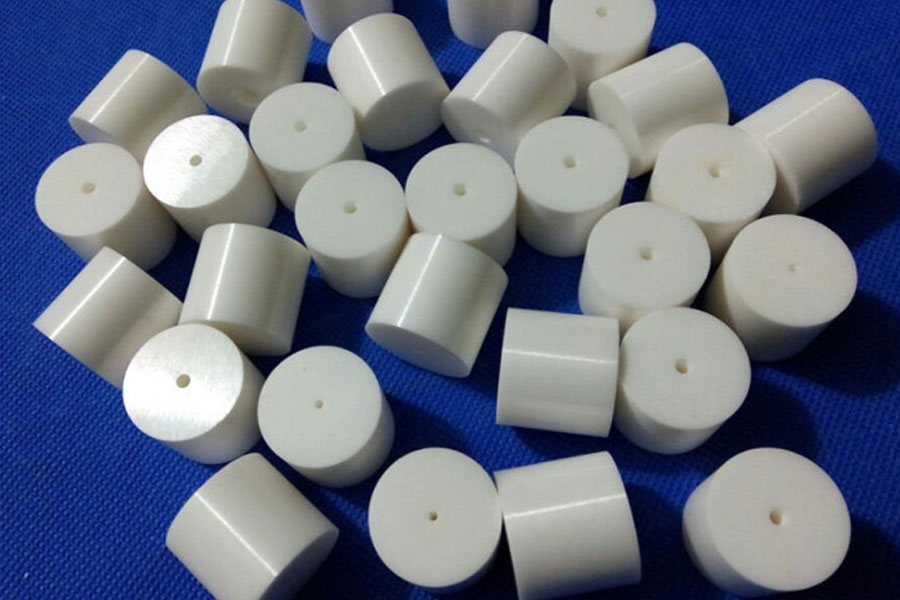The operator should adjust the feed rate to a very small when starting cnc part processing, single block execution, focus on rapid positioning, knife drop, and knife feed. The hand should be placed on the stop button to stop immediately if there is a problem, pay attention to observe the tool movement Orient the direction to ensure safe feed, and then slowly increase the feed speed to the appropriate, and add coolant or cold air to the tool and the workpiece.
The operator should adjust the feed rate to a very small when starting cnc part processing, single block execution, focus on rapid positioning, knife drop, and knife feed. The hand should be placed on the stop button to stop immediately if there is a problem, pay attention to observe the tool movement Orient the direction to ensure safe feed, and then slowly increase the feed speed to the appropriate, and add coolant or cold air to the tool and the workpiece.
Aluminum profile cnc processed aluminum shell
When roughing, do not leave it too far from the control panel. If there is any abnormal phenomenon, stop the machine and check it in time. Pull the meter once again after opening to make sure the workpiece is not loose. If there is, it must be recalibrated and touched. During the processing process, the processing parameters are continuously optimized to achieve better machining aluminium results.
After the workpiece is processed, it should be measured whether the main dimension value is consistent with the drawing requirements. If there is any problem, immediately notify the team leader or programmer to check and solve it. It can be removed after passing the self-inspection and must be sent to the inspector for special inspection. Common types of CNC machining include the following:
1. Hole machining: Before drilling on the machining center, be sure to use the center drill to locate, and then drill with a drill bit 0.5~2mm smaller than the drawing size, and finish machining with a suitable drill bit.
2. Reaming processing: To reaming the workpiece, it is also necessary to use the center drill to position, then drill with a drill bit 0.5~0.3mm smaller than the drawing size, and then use the reamer to ream the hole. Pay attention to control the spindle speed during reaming Within 70~180rpm/min.
3. Boring processing: For the boring processing of the workpiece, the center drill must be used for positioning, and then drilled with a drill bit 1~2mm smaller than the drawing size, and then processed with a rough boring cutter (or milling cutter) until only one side is left. The machining allowance is about 0.3mm, and then the fine boring tool with pre-adjusted size is used for fine boring, and then the fine boring allowance should not be less than 0.1mm.
4. Direct numerical control (DNC) operation: Before DNC numerical control processing, the workpiece must be clamped, the zero position set, and the parameters set. Open the processing program to be transferred in the computer to check, and then let the computer enter the DNC state, and enter the file name of the correct processing program. Press the TAPE key and the program start key on the processing machine, at this time the machine tool controller appears flashing LSK. Press the Enter keyboard on the computer to perform DNC data processing.
In the process of cnc parts processing, workpiece clamping is also a problem that must be paid attention to.
How to do this step in workpiece clamping during processing?
Before clamping the workpiece, clean all the surfaces first. There should be no oil stains, iron filings and dust, and use a file (or whetstone) to remove the burrs on the surface of the workpiece.
The high-speed rail used for clamping must be smoothed by a grinder to smooth and smooth the surfaces. The code iron and nut must be strong and can clamp the workpiece reliably, and some small workpieces that are difficult to clamp can be directly clamped on the vise; the machine table should be clean and free of iron filings, dust, and oil; the horn is general Place at the four corners of the workpiece. For the workpiece with a large span, it is necessary to add equal height shim in the middle.
According to the size of the drawing, use the caliper to check whether the length, width and height of the workpiece are qualified.
When clamping the workpiece, according to the setting method of the programming operation guide, you should consider avoiding the processing part and the situation that the tool head may hit the fixture during processing.
After the workpiece is placed on the shim, the reference surface of the workpiece should be drawn according to the drawing requirements. For the workpiece that has been ground on all six sides, check whether the verticality is qualified.
Be sure to tighten the nut after the workpiece is pulled to prevent the workpiece from shifting during processing due to insecure clamping; pull the watch again to make sure that the error is not excessive after clamping.
